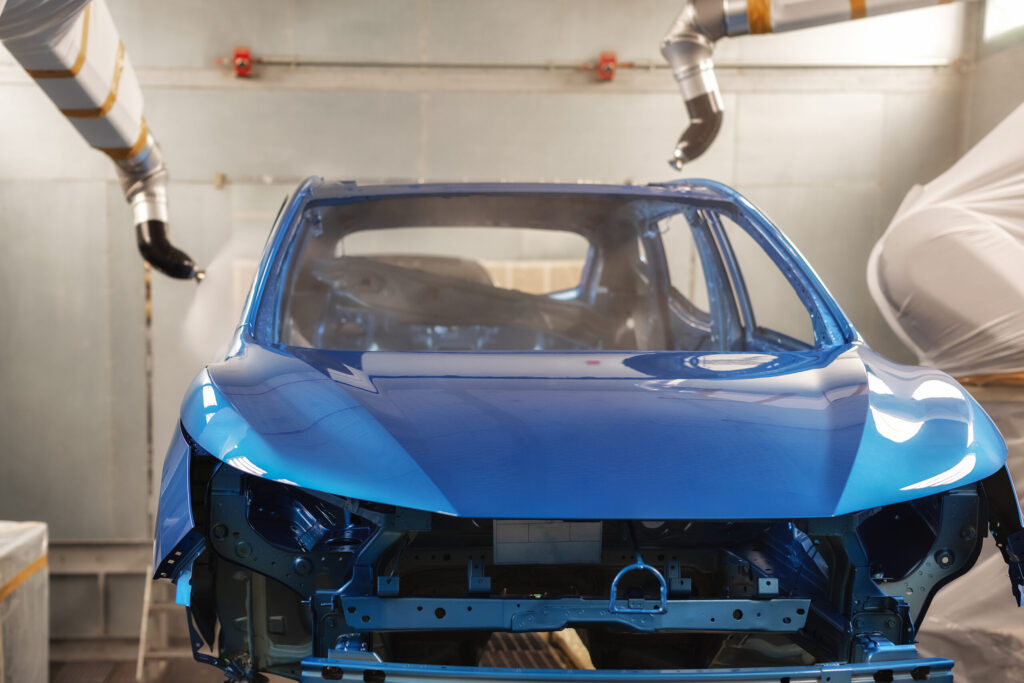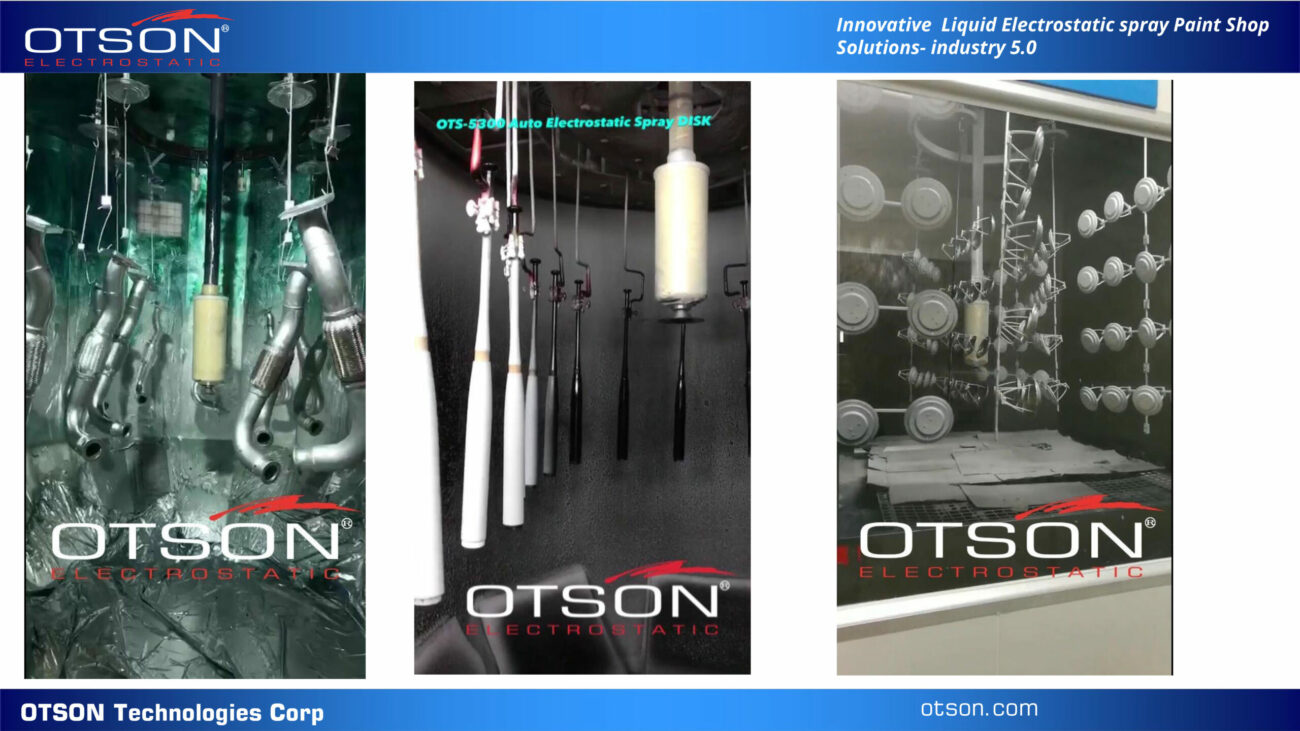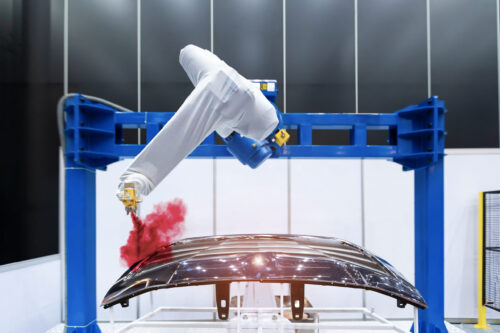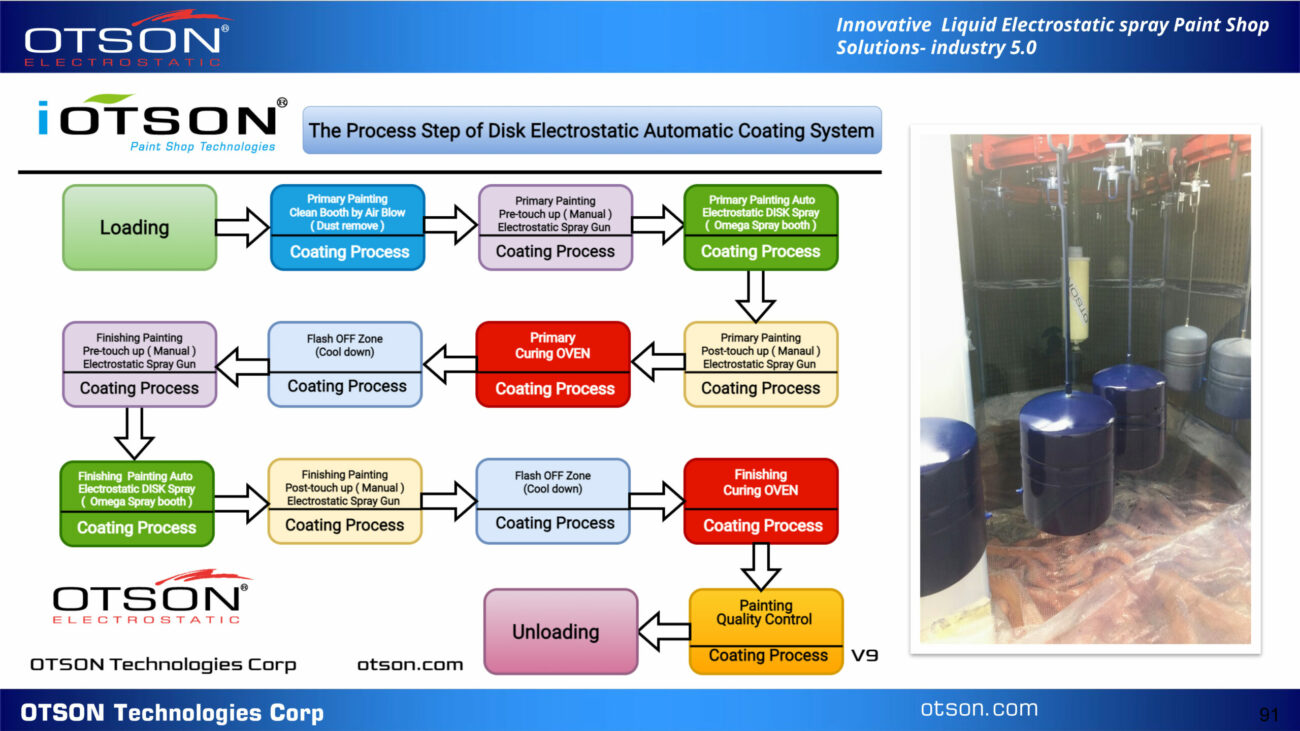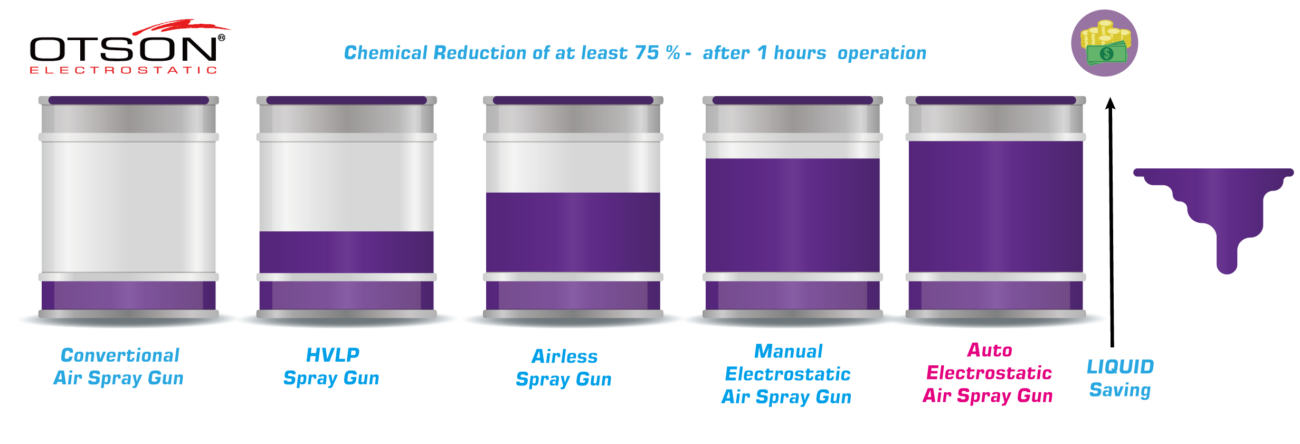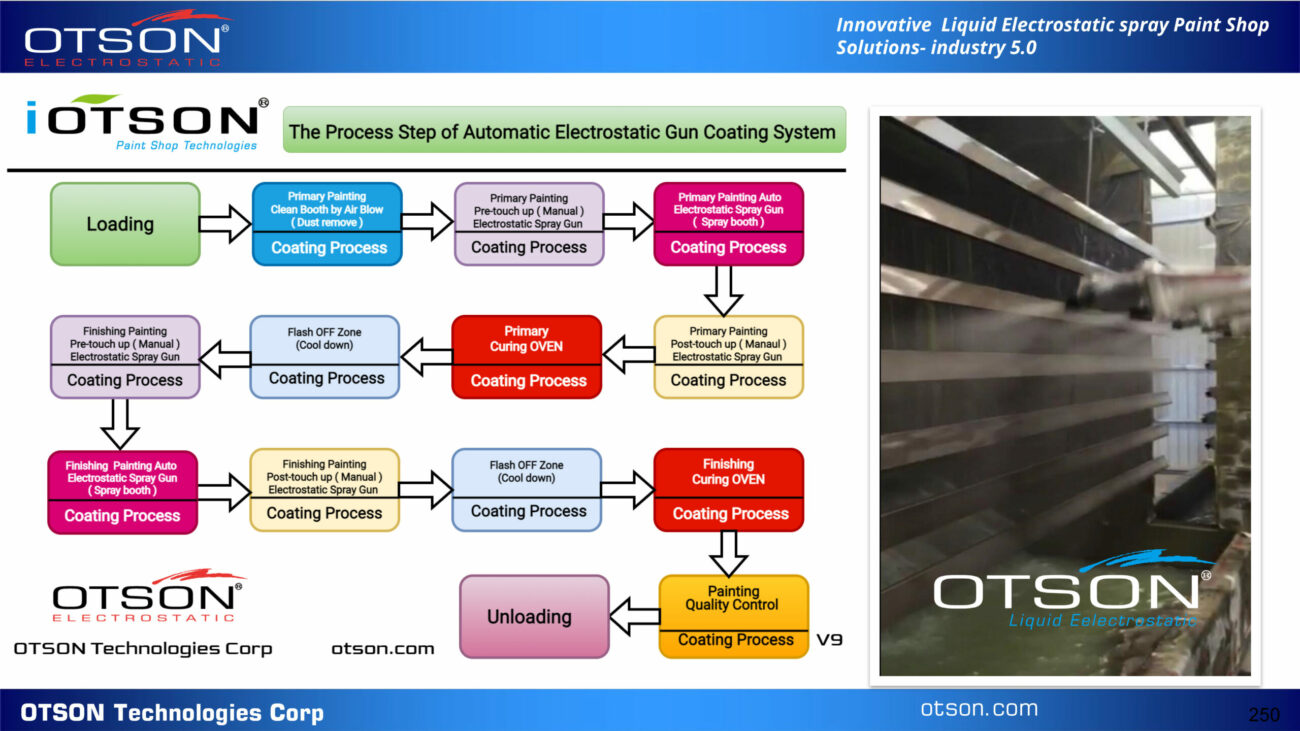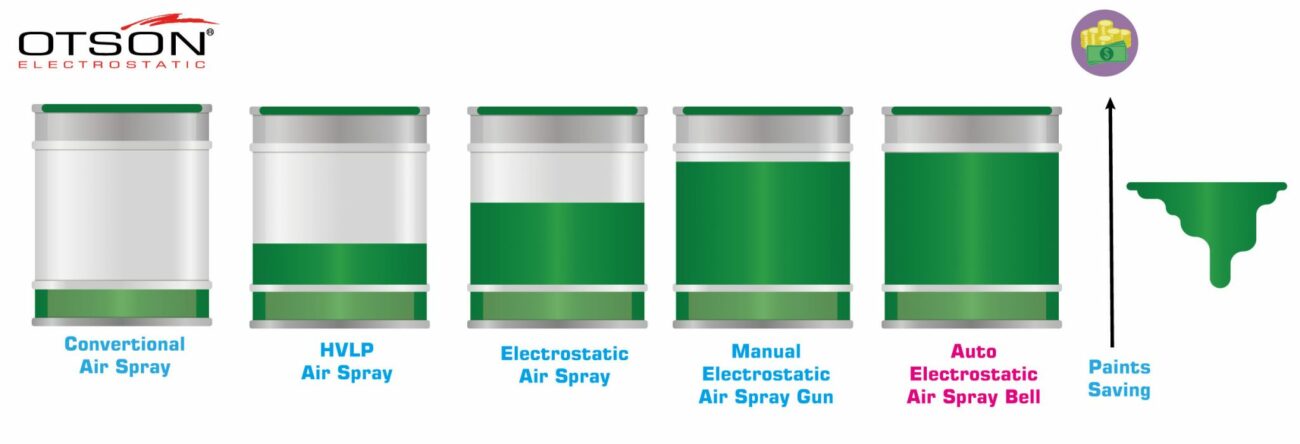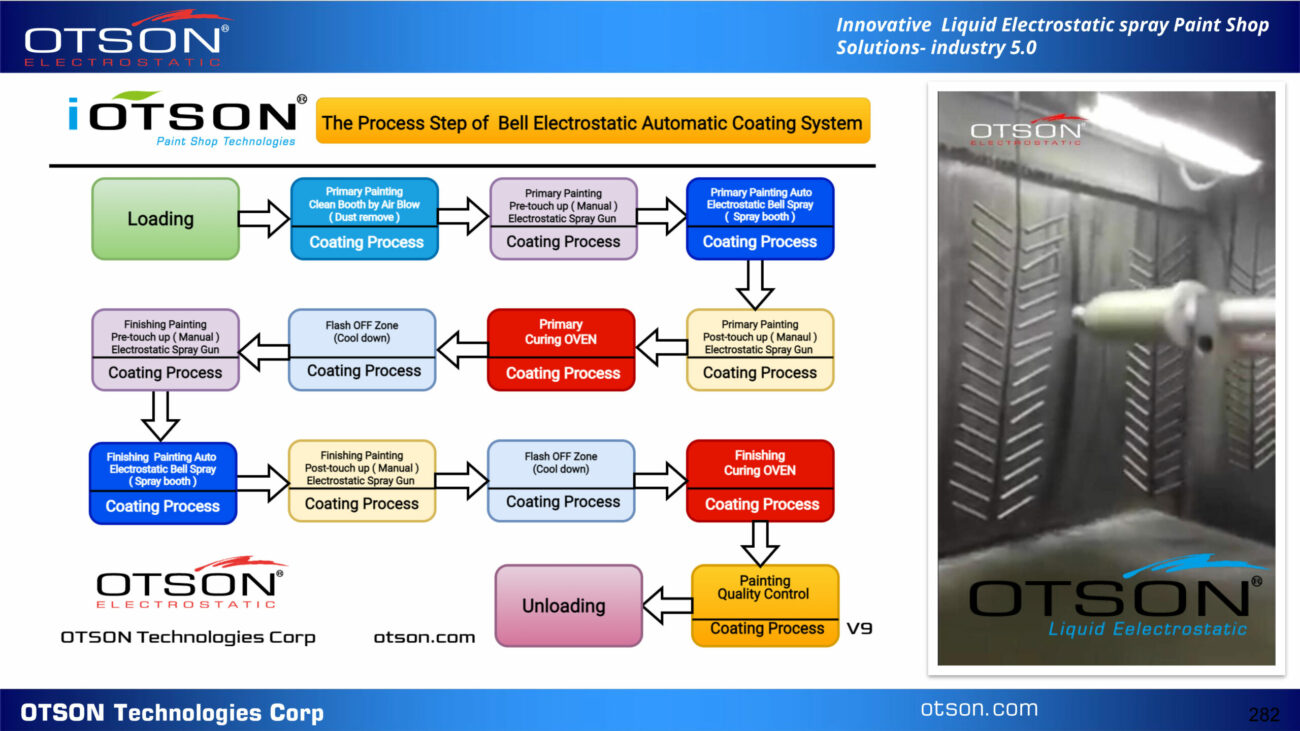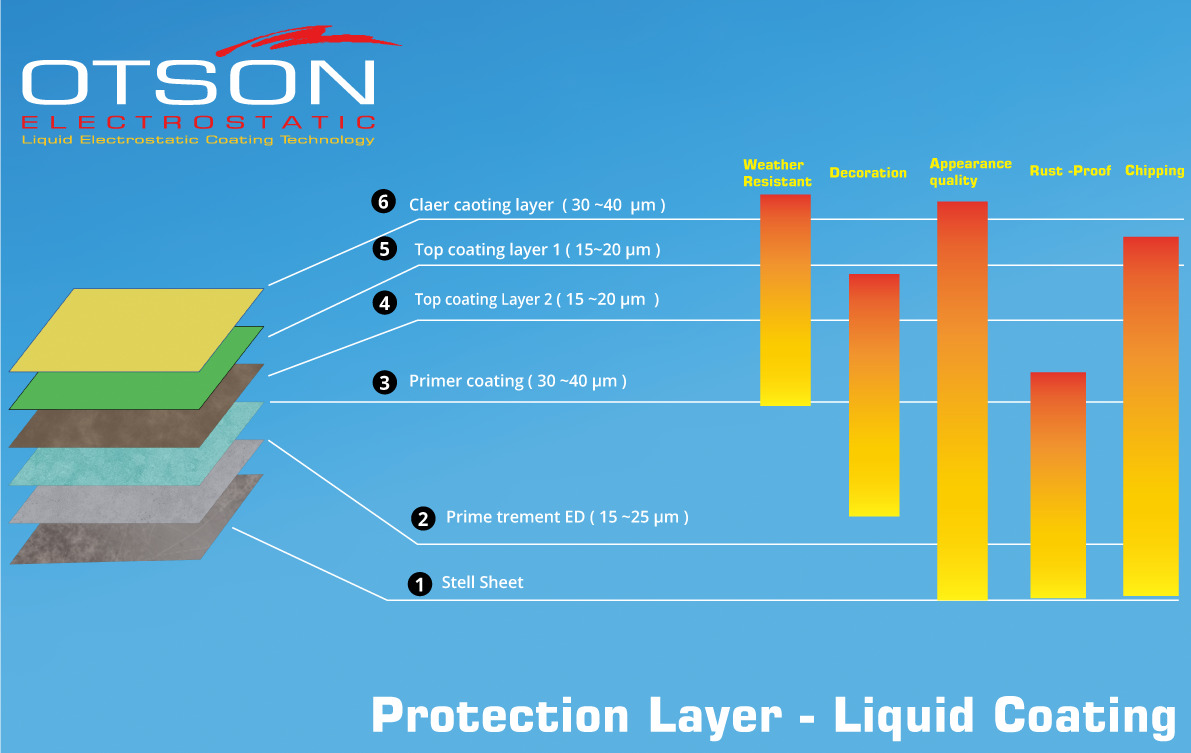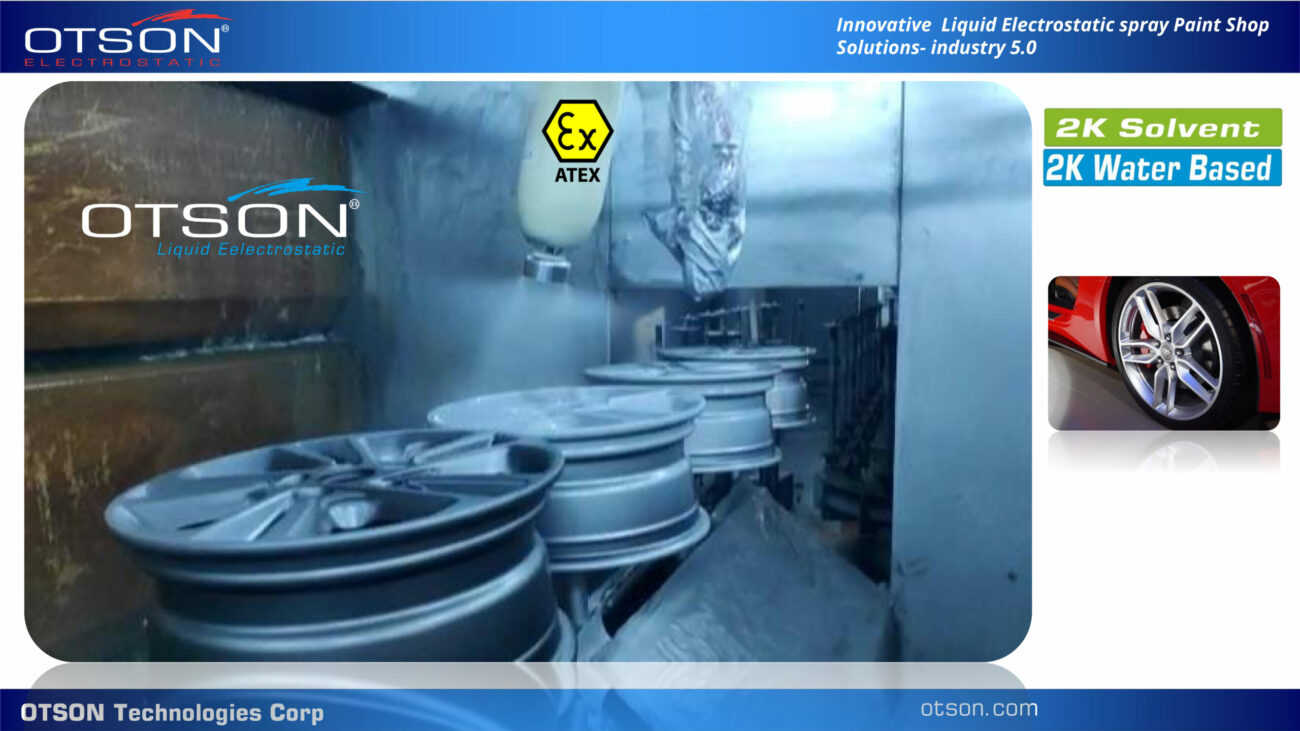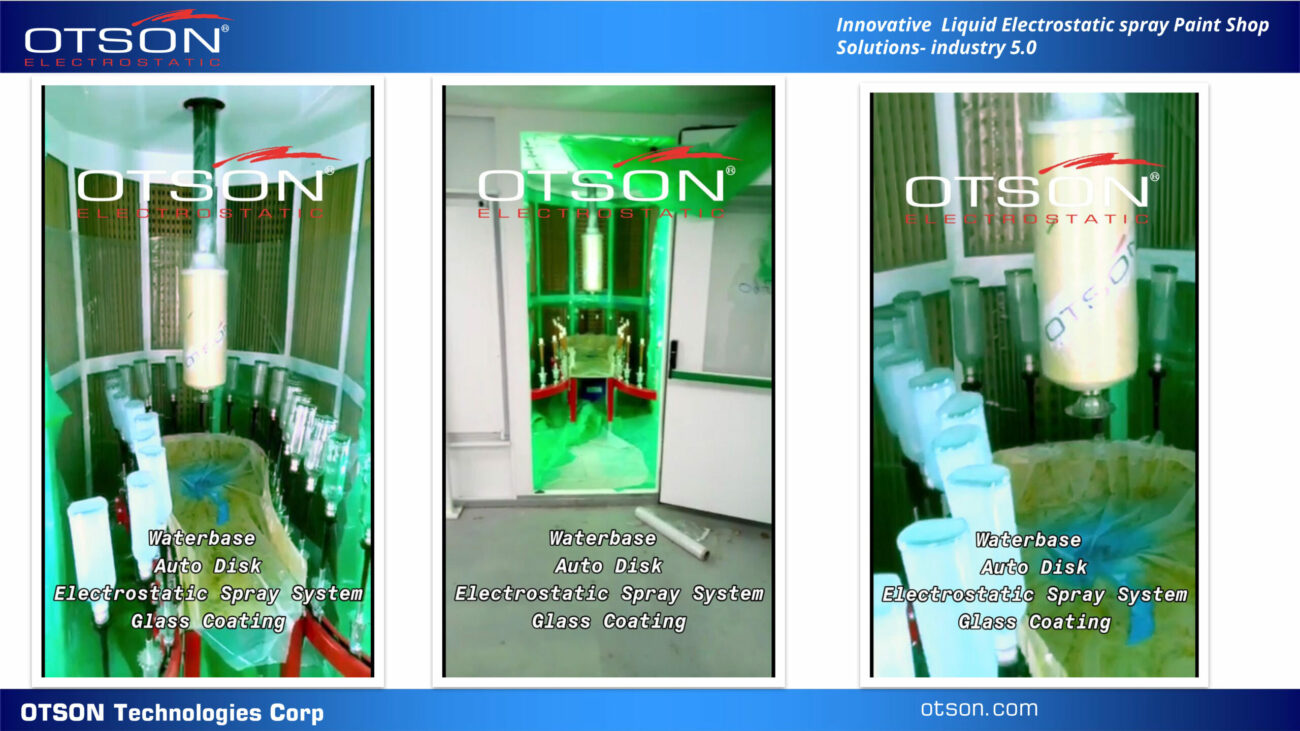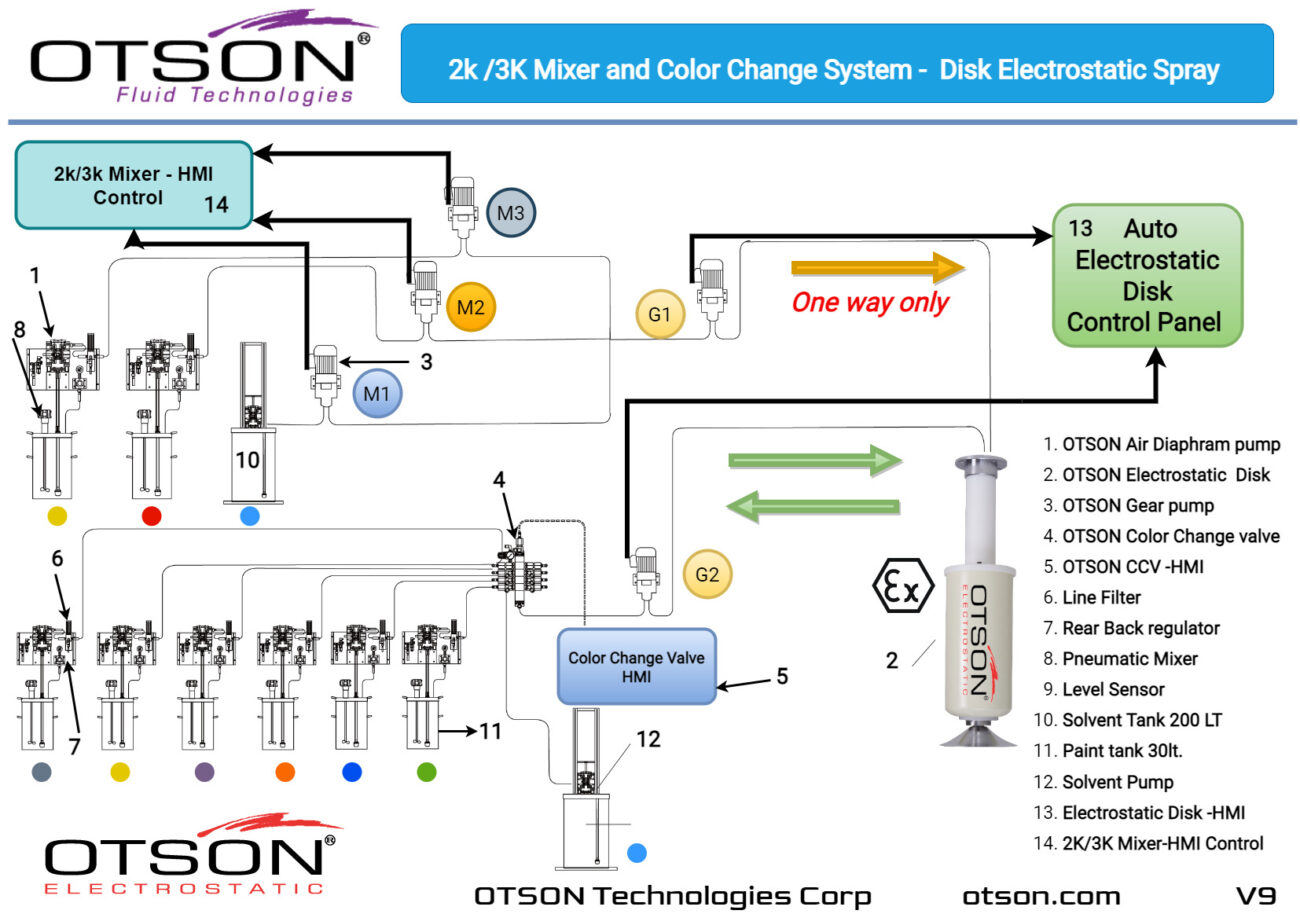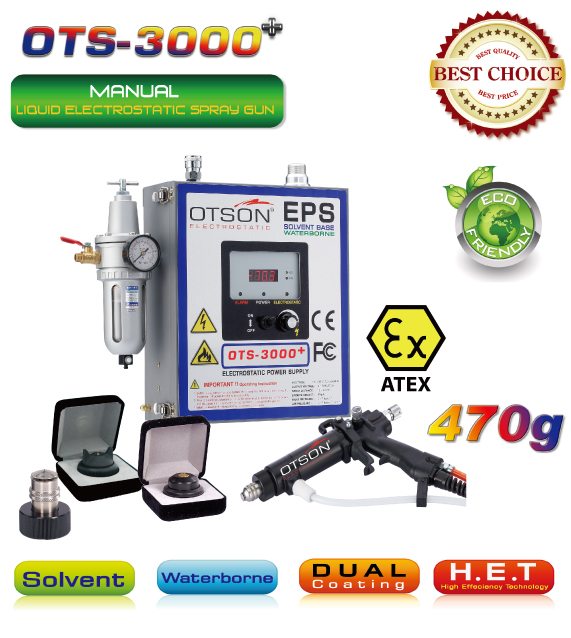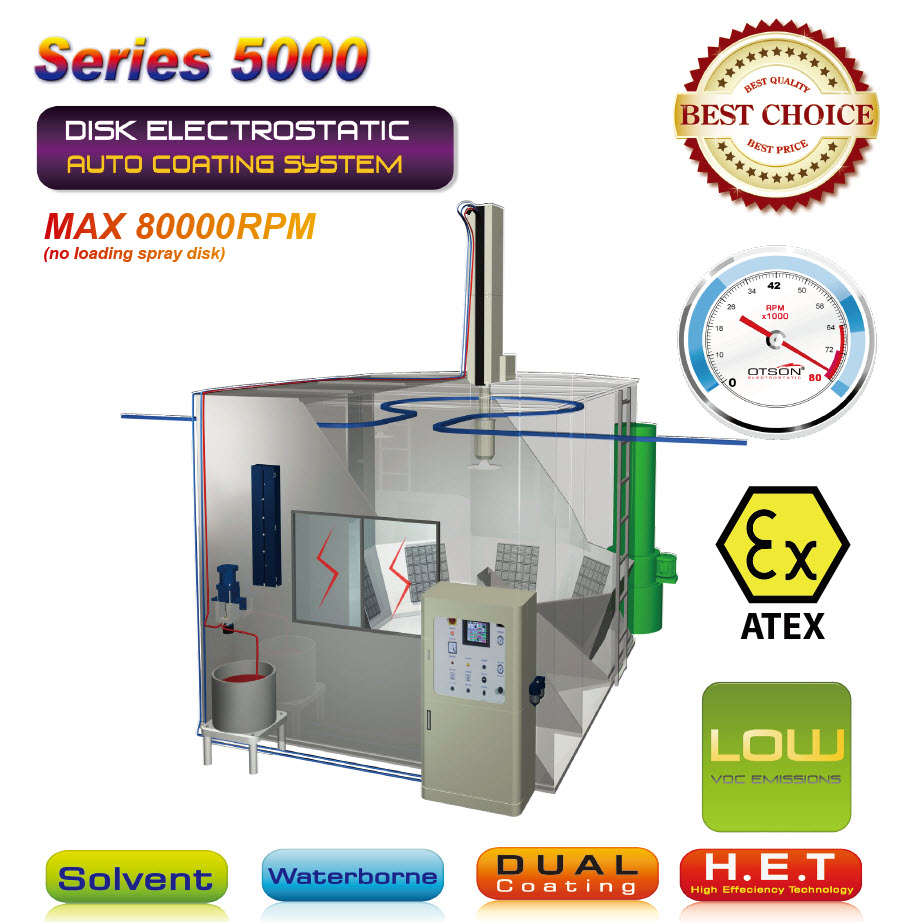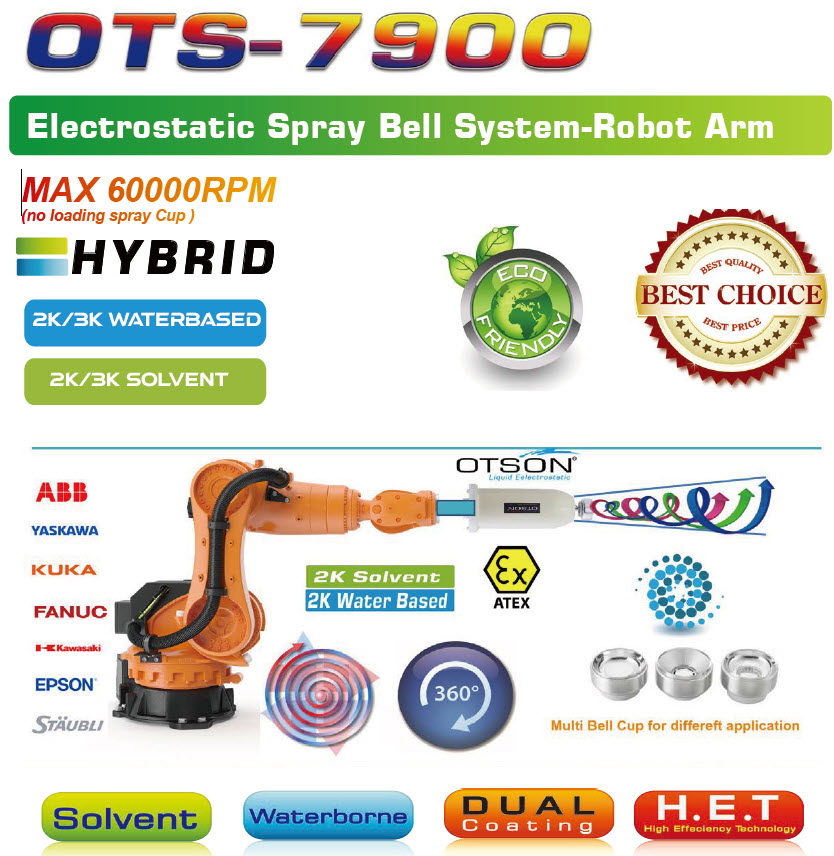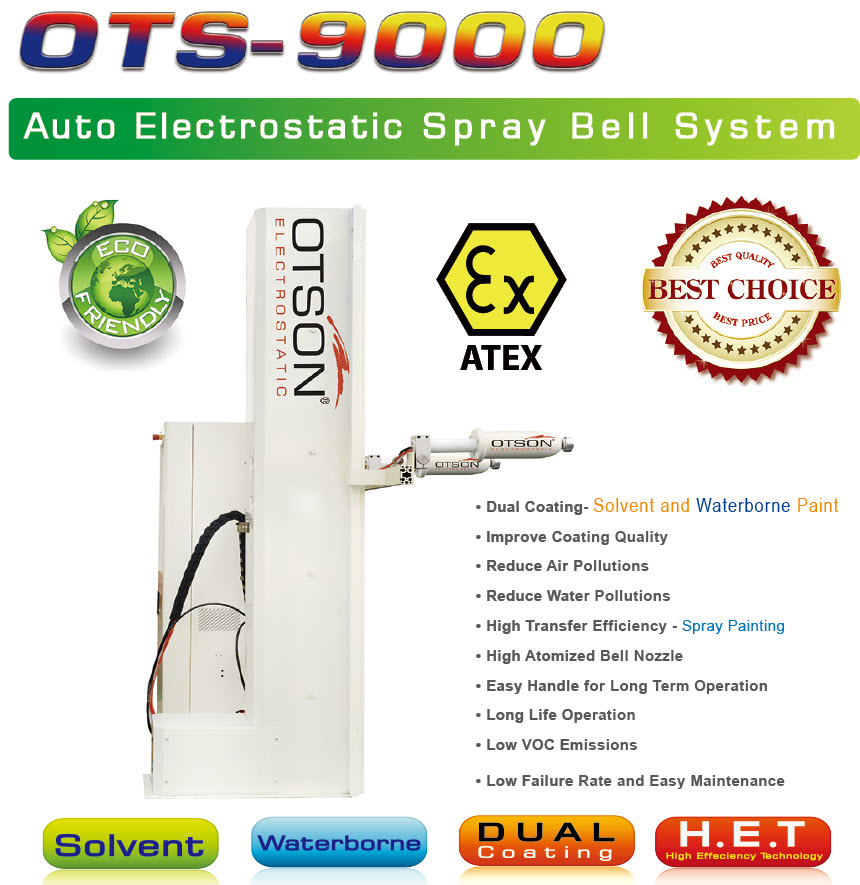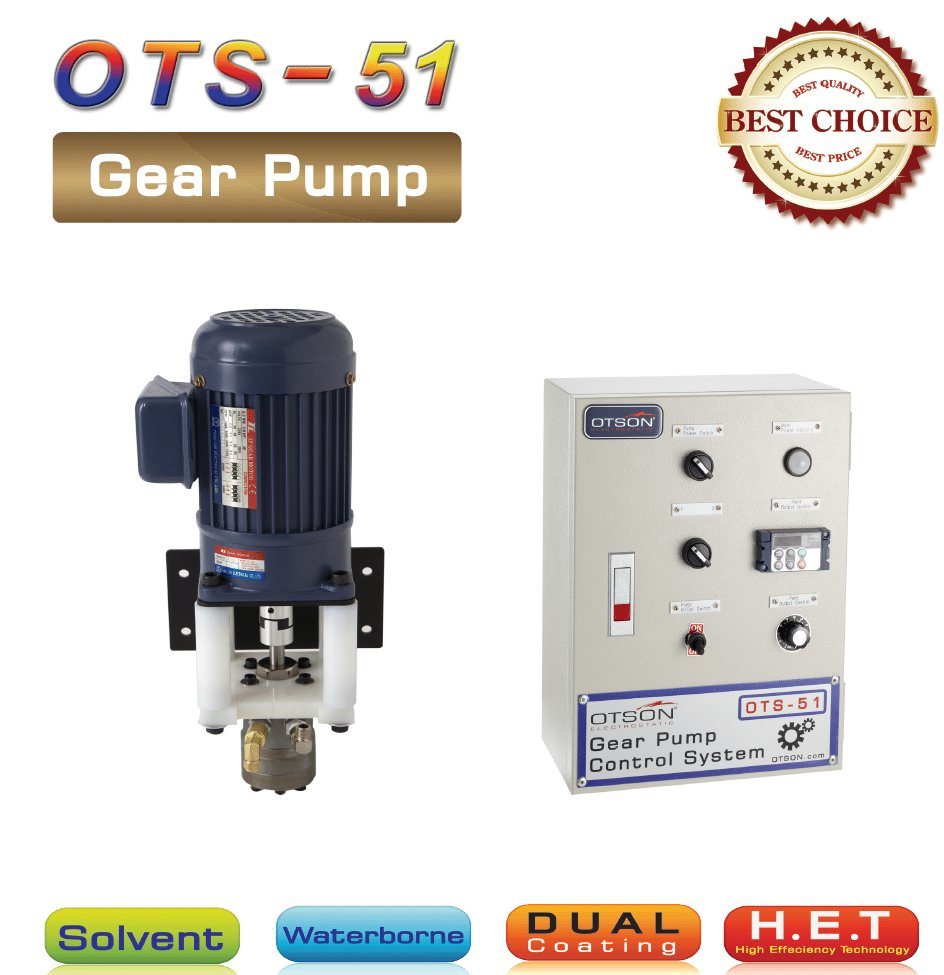Automotive Industry- Liquid-Electrostatic-Spray-Coating-Technologies
Electrostatic spray is a method of applying liquid coatings, such as paint, to vehicles using an electrostatic charge. The process involves atomizing the liquid into droplets and then giving them an electrostatic charge. The charged droplets are then attracted to the grounded vehicle, ensuring an even and efficient coating. This technology is widely used in the automotive industry for cars, trucks, buses, motorcycles, and other vehicles.
One of the main advantages of electrostatic spray is the increased paint savings. The electrostatic charge causes the paint droplets to be attracted to the vehicle, resulting in less overspray and a more efficient use of paint. This means that less paint is needed to achieve the same coverage as traditional spray methods, resulting in cost savings for the customer.
Another advantage of electrostatic spray is the improved transfer efficiency. The electrostatic charge causes the paint droplets to be attracted to the vehicle, resulting in a higher percentage of the paint being deposited on the vehicle and less being wasted as overspray. This results in a more consistent and even coating, with fewer drips and runs.
In addition, electrostatic spray reduces overspray, which can help to improve air quality and reduce cleanup time. Traditional spray methods can result in a significant amount of overspray, which can be harmful to the environment and take a long time to clean up. Electrostatic spray, on the other hand, reduces overspray and makes cleanup easier and more efficient.
Finally, electrostatic spray technology can be used to apply a wide range of coatings, including basecoats, clearcoats, primers, and more. This versatility makes it suitable for a wide range of automotive and industrial applications.
Overall, electrostatic spray is a highly efficient and cost-effective method of applying liquid coatings to vehicles. It offers a range of benefits including increased paint savings, improved transfer efficiency, reduced overspray, and improved air quality. And as a result, it is widely adopted by automotive industry for painting cars, trucks, buses, motorcycles, and other vehicles.





































